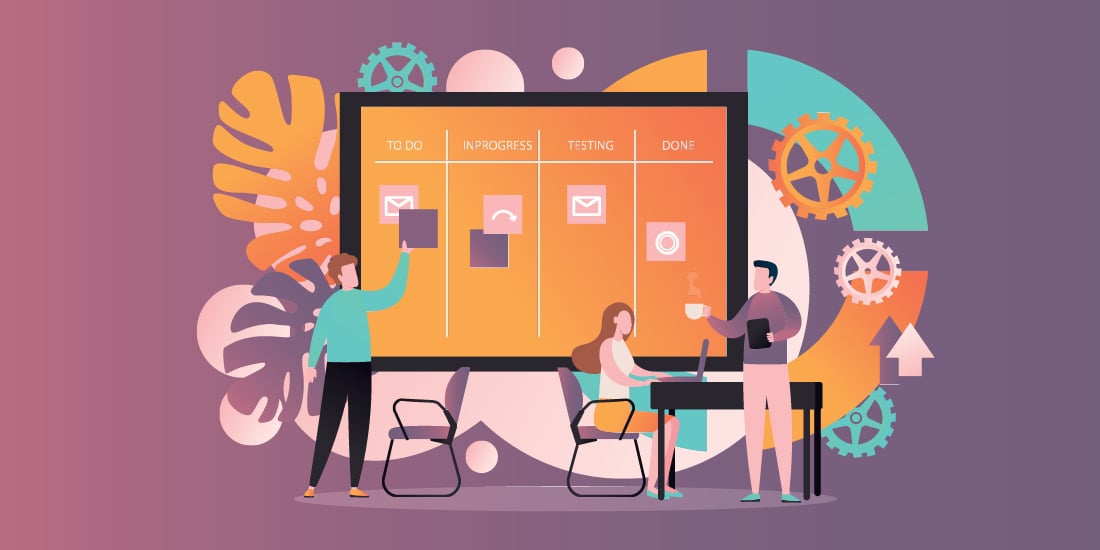Video transcription: Over the last few weeks I've been looking at micro-learning platforms on behalf of a couple of clients. Generally speaking when I want to get into looking at micro-learning or other platforms I like to try and build things within the platform to really get under the hood and understand how this particular platform works and what kind of experience it creates for people. Micro-learning is all the rage just at the moment. The Deloitte human capital trends report for 2019 says that learning is a big issue and that those organisations who are looking at learning and development as part of their corporate strategy are looking at developing material in digestible chunks.
So micro-learning is front and centre of what's going on within the world of learning technologies at the moment but as I was playing with these two tools I was interested by how different they were. Although they both call themselves micro-learning. One is essentially space-to-practice tool. It works on the basis that it sends out questions to people and once you've got the same question right twice in succession it retires that question. So you'll get maybe three questions one day, two questions the next day, the following week you'll get another four or five questions. It will roll through these the number of questions that have been programmed into the system until you've managed to retire all of them. Once you've answered a question it gives you some more information. So an explainer piece comes up. That of course is another way of reinforcing the content that you may already have considered or being given.
So for things like product knowledge or compliance then I can see this sort of thing being quite attractive to people. What I'd be really interested in though is if it also had a confidence check system. Very often the answer the question you get it right. but in honesty you maybe guessed a little bit. It would be really good to understand which people have got questions right but don't necessarily feel confident because that means to me that they're unlikely to apply the knowledge that they have in practice.
More interesting and more importantly I guess it also helps to identify the bluffers, the people who say yes I know what the answers are I know what's right but are actually way off mark. Those individuals are actively dangerous. They will go and do the wrong thing believing that what they are doing is right and we need to intervene with those individuals quickly. So some kind of confidence check would add some value. As a knowledge check piece as Will Thalheimer says when he talks about learning transfer evaluation method it's at Tier 3 Tier 4. It's checking knowledge and it's doing it after the event but that knowledge check is not necessarily linked to improved performance in the workplace it's just measuring whether or not people have remembered something it has a purpose. But it's not great.
However this system also does a couple of other things that are quite interesting one of them is a video response mechanism so gives me a scenario and I have to film my response to that scenario and then that's fired off to my line manager or nominated coach. I can also comment, so if a question comes up and I've got a burning desire to share my thoughts with the rest of the world then I can do that. It has leaderboards it has leaderboard by teams so those people who need to be competing with something in order to get engaged can get involved. I can see why people would quite like the idea of that if not necessarily the practice.
The second platform that I looked at though is much more rounded it's not about question and answer it's about delivering content to people but it's delivering bite-sized content very small pieces. It sequences them so that you can see a piece of text maybe a weblink maybe a video maybe answer a simple question (although the question mechanisms are a bit simplistic to be of any use). Fundamentally though I can send content out to people in short sequences that they can consume on the go. I suppose in a way that's what I understood micro-learning to be all about when I first came into this.
However If you look at some of that material and some of the limitations which the tool puts on you as a designer we're going back to a learning design mechanism which wouldn't have been that interesting back when I first started creating e-learning programs 20 years ago. This is teach, teach, test stuff at best. Some of it is text on screen or a series of articles with a next button. I'm not sure that that's enough to develop people's competence nor to develop people's confidence to go and do things differently and do different things. And if we're not about enabling people to do things differently and do different things what are we doing? As learning and development professionals micro-learning may well be micro but is it learning? Knowing what I should do. Knowing what constitutes good practice is very different from committing to be a good practitioner and being able to be judged as such.
And I won't really think that this is learning until such time as it's got those opportunities for experimentation, application, implementation, skills development, feedback, learning transfer and behaviour change. Without those components. Maybe this isn't learning at all. It's just adding to the digital noise and frankly I don't know about you but I've probably got enough digital noise already. Thank you.








